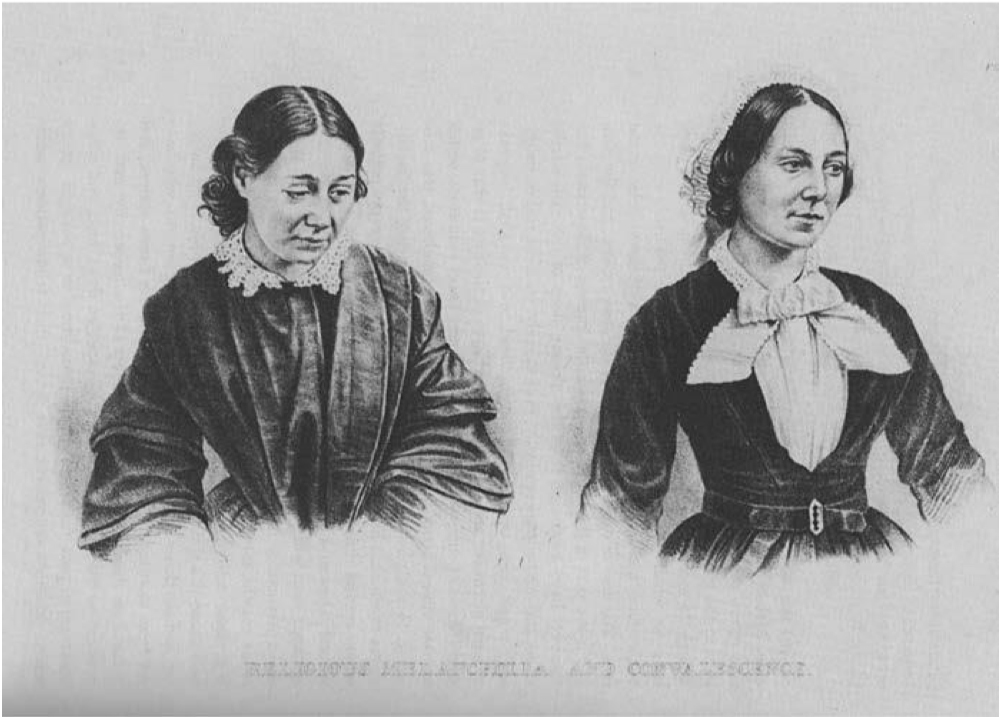
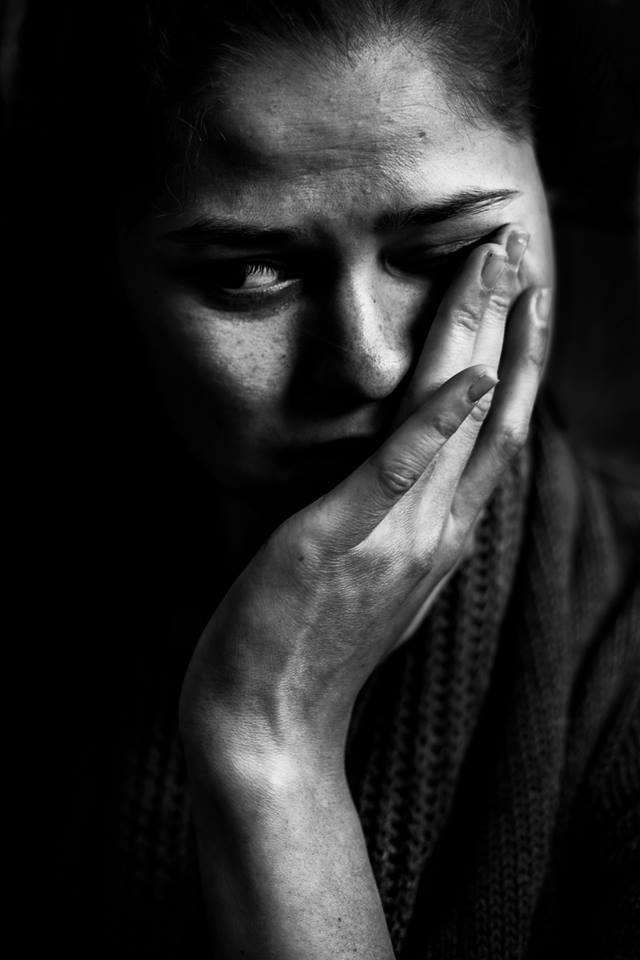
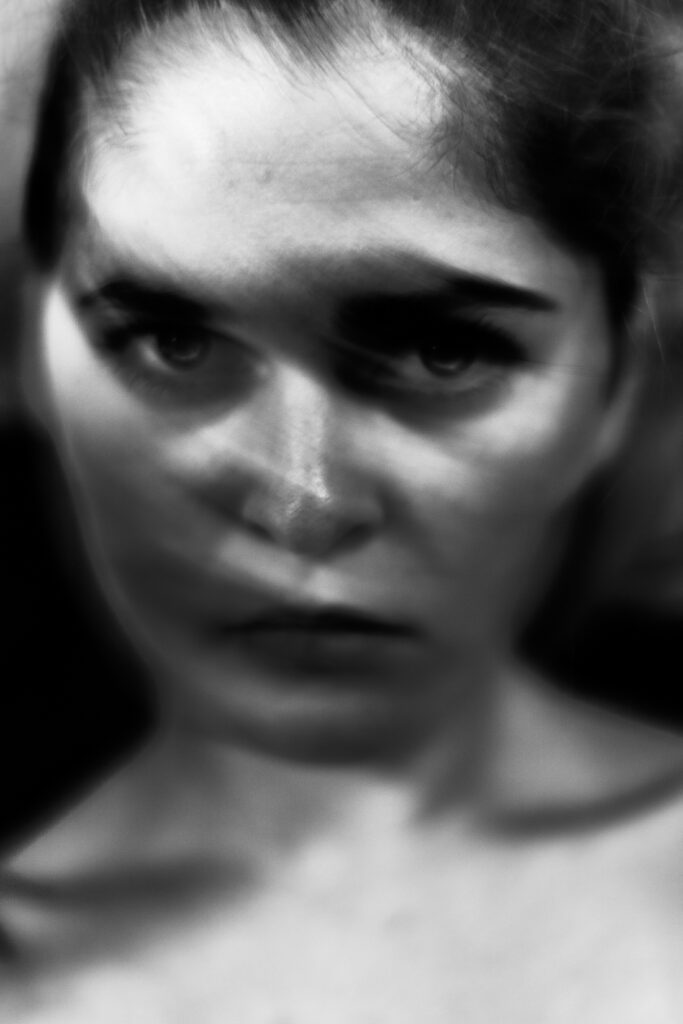
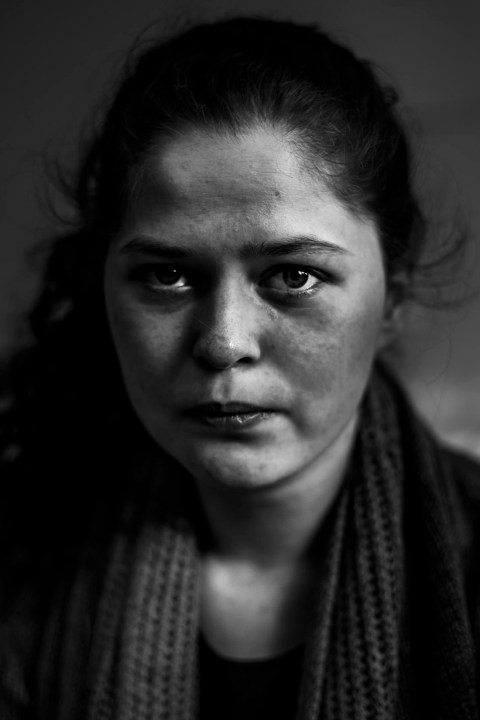
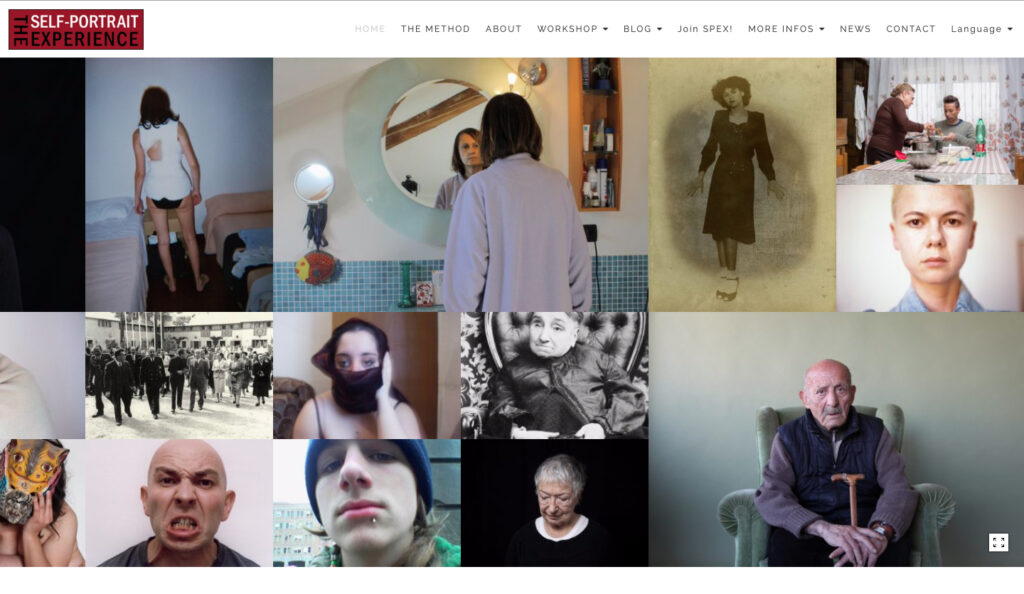
Fake It Till You Make It / The Reflected Self Through A Photographic Portrait
“You are the only one who can never see yourself except as an image . . . even and especially for your own body, you are condemned to the repertoire of its images”.1
Roland Barthes
In the mid 19th century, a doctor in London named Hugh Diamond (1809–1886) cured mentally ill asylum patients simply by showing them staged photographs of themselves. They were having delusions and misconceptions of who they were and when they were confronted with a photograph depicting themselves, they could see and understand their appearance as they were viewed by others, hence they could see their real personas, and by doing that be freed from the spell of their mental illness.

Does this sound too good to be true? Most likely. However, this attempt to cure mental illness with photography is an early example of photo therapy, where you use the power of photography to mend your psyche. This method has been developed since then and has been used by many. Diamond was the man behind the photographic exhibition The Types of Insanity that took place at the London Society of Arts in 1852, joining the tradition of medical illustration (a more famous example is the Hysteria photographs from the practice of Dr Jean-Martin Charcot, contemporary with Diamond).2
The question of whether Diamond’s patients were cured or not is not as interesting as the fact that he also tried to put them in front of a mirror to make them see themselves, with no effect at all. Why? The mirrored image looked just the same as the photograph, besides it was reversed and not black and white. So why couldn’t the mirror help the asylum patients in the same way as the photograph? According to Sharrona Pearl, who has researched the work of Hugh Diamond, the mirror-image didn’t have the capacity of changing the minds of the patients as they looked at themselves and saw “what they expected to see”.3 Their preconceptions of themselves created an obstacle to seeing themselves as others would see them. There are some other issues that separate the reflection in a mirror from the photograph: a mirror-image is instant and direct with nothing between you and the surface of the mirror, nothing except the mind telling you what you see (and how to interpret it). When looking at yourself in a photograph, you have a distance between the image of you and yourself, created by the camera. When looking at a reflection of yourself in a mirror, the image is not fixed as a photograph is, it follows your movement. The size of your reflection is equal with your size, contrary to the photograph, which could be any size. The mirror image does not last. A photograph could be preserved for more than a hundred years, if the quality of the copy and circumstances are appropriate. Another issue that also affects the interpretation is the conception of photography as a medium and what the viewer thinks of what a photograph actually shows. Does it tell the truth? Well, in the mid 19th century, the authenticity status of photography was high. Few of those looking at a photograph at that time would question its truth value; the truth, as in how people and objects appeared in the photographs. The asylum patients of Diamond had the ability to gain new insights about themselves by looking at photographs and thinking, “oh, is this the way people see me?”, meaning the person in the image is the most real version and should be considered as the truest self. The camera doesn’t lie. The function of the mirror was not helpful in this case since the reflection only confirmed the self-image they already had in their minds before looking, which could have presented an obstacle to rethinking their appearance. However, one important aspect in the case of the asylum patients of Diamond is that the portraits of them were staged and taken by the doctor himself. The primary gaze was the gaze of the doctor, an authoritarian person with power, responsible for the lives of the patients. This must have had a great effect on the perception of those who looked at the photographs of the patients, and especially the patient’s own notion of perceiving themselves.
When the mirror image wasn’t enough for the mentally disabled patients in the care of Diamond, Jo Spence (1934–1992), contemporary photographer and writer, discovered certain qualities of the mirror which she often used not only when preparing for her staged photographs, but also as a sort of self-therapy, mirror therapy. She was interested in the mythologies of the mirror and could relate to the Greek story of Perseus who could only slay the Medusa by looking at her reflected in a mirror, regarding her initial fear of directly looking at her cancerous breast. In Spence’s personal notes on the mirror, she suggests that:
The Mirror is dumb non evaluative and non human – whatever I do in front of it – It can’t be critical like a person – It is not my Mummy or Daddy – mirror pictures are a private self activated show – just for me until I want to invite others in.4
How does this description of the mirror differ from how the camera works? The camera is not critical, it is not evaluating (it is certainly not “Mummy or Daddy”) – or is it? Spence is praising the privacy of the mirror image (just for me) and she continues by stating “mirror images cannot be saved for others to see later” and argues that it is then safe to be “uninhibited” and be able to expose your vulnerable self. The idea of the camera as objective has been discussed by many through the history of photography. The film theorist André Bazin (1918–1958) argued that photography had the ability of creating a reproduction of the “originating object” almost without any interaction of the human hand (contrary to painting) and hence would have the capacity of showing a truthful (objective) reflection of the photographed object.5 Bazin admitted that the personality of the photographer might play a part by the selection of the object and the purpose of photographing it, but his overall opinion seemed to be that photography has a certain autonomy in the sense of objectively reproducing images of the world. Which in one aspect is true if you consider the apparatus of the camera as something non-human. The decision of making the reproduction is in the end, however, made by a human, and therefore contradicts the argument of the objective photograph.
A great difference between how asylum patients in the 19th century were treated with photo therapy and how Jo Spence worked with photography as a therapeutic tool in the late 20th century was of course the mental state of the asylum patients combined with the prevailing zeitgeist, where people considered insane had little or no say regarding their treatment, especially the poor.
Today, the notion of photography’s authenticity is quite different, but it is still complicated. Regarding the appearances of people in everyday life and photographs posted on social media – frequently the ‘selfie’ – we (the viewers) know how easy it is to manipulate a photograph. In other words, what you see depicted in a photograph might not simply be a copy of what we would see with our eyes. Isn’t the case today that we rather assume that (depending on which genre you mean, of course) photography is “faked” somehow to make it look better? The photographic image and image-making is today more controlled by the photographer, and therefore the sense is that what the photo looks like is what the photographer wants it to look like. Nevertheless, photography possesses the illusion of showing the “truth” and is still used for that reason in many disciplines, such as the forensic domain.



The young Dutch photographer Laura Hospes (b. 1994) is also taking advantage of this prevalent conception by posting her self-portraits on Instagram. The viewer, who most likely is used to smiling duck lips with soft-skin filters, is instead greeted with the grim look of a wounded girl in despair. Her imagery reveals deep scars on her body and in her mind, in one sense extremely vulnerable and in another extremely controlled and bold. For Hospes, whose work is part of the healing process of her mental illness, the portraits give a hint of her inner state of mind, which she has a problem with showing the world face to face in real life, as she describes when talking about her work.6The faces in her photographs show her state at that exact moment and have the purpose of acting out in the moment of the photo being taken. But they could later be used as a documentation and remembrance of the process of healing. An important issue of her work is time, and to be able to later recognize transformation in the portraits. On the contrary, the photographer and social activist Christina Nuñez (b. 1962) asks herself if self-portraits could work almost like a prophecy. This question was posed when she realised that she had become the woman she saw in her old self-portraits. She refers to art therapist Shaun McNiff, who states: “Rather than approaching images negatively, as indicators of what is wrong with me, I prefer a more imaginative attitude that views the image as a step ahead of the reflecting mind, as a guide who shows me where I can go and what I can be.”7

Nuñez is convinced that the self-portrait has an enormous potential for shaping and reshaping one’s identity as it can make you see and evaluate your different types of personas. Not unlike the Freudian concept of being able to discover hidden material from the unconscious through psychoanalysis, Nuñez has a strong belief in the act of making a photographic self-portrait: “Shot after shot I live through all my different personas, searching in my unconscious for something I still do not know of myself. I am focused on my interiority, even though the camera will mainly register my outer appearance.”8 And she continues by reflecting over the fact that she may judge herself or control her behaviour so that the image will be more “acceptable”. In each case, Nuñez thinks that it still is a success. In her opinion there are no “failures” in making self-portraits as there is always something to gain even when you “pretend or hide”. The ability to stop time and save a moment is therefore one important aspect of photography, according to Nuñez. She also underlines the fact that through the act of looking, the self-portraitist “acquires a triple identity: author, subject and spectator at one and the same time”9, which adds another layer to the whole act. This play with roles is characteristic in the use of photography as a therapeutic tool. By shifting identities and putting on different “glasses” you have a greater chance to see and discover new perspectives of yourself. Just as the identity of the infant is being shaped during the mirror phase (a concept developed by Jacques Lacan, where the infant discovers itself through the sight of its own reflection), perhaps the identity of a grown-up has the power to be re-shaped when reflected in the mediated mirror the photograph could be seen as. Paediatrician and psychoanalyst Donald Winnicott (1896–1971) describes the ‘good-enough mother’ who shows her face to the baby, reflecting the baby’s expression back to it as a mirror would, assuring the baby that it is seen, and therefore it exists and can look back with curiosity and with a growing seed of confidence. But if the mother is “caught up in her own projective identification” and reflects her own despair in her expression, feelings of hopelessness and failure at being a mother, the child will not see itself in the face of its mother: instead, it sees its mother and will thereafter maybe learn to predict and respond to her feelings and not its own.1
In her report from 1986, published in The Arts of Psychotherapy, PhD Denise Phillips describes how she worked with photography as a therapeutic tool on a test group with the purpose of improving the mental health of patients suffering from schizophrenia.11 Phillips explains how her patients are encouraged to express themselves by taking photographs of their environment and selected objects, develop the photographs and then have discussions about them. The photographs, Phillips proposes, helped them find some stability in a shaky world thanks to the heavy anchor photography provides to reality. However, the greatest benefit for her as a therapist is the “split personality” of the photograph, referring to the capacity of the photograph to be both subjective and objective at the same time, no matter how objective a photograph is trying to be: “insofar as they stubbornly insist”, Phillips writes, “even when they are intended to be exclusively reportorial, on reflecting the photographer’s personal qualities, perceptions and biases, they are subjective”. This serves a dual purpose for the therapist, Phillips continues: “It provides patients with exposure to objects in the environment in a reality-oriented manner and it allows the therapist to view the patients’ choices of how they want to represent that reality”.12 Phillips claims that the photograph could somehow reveal both conscious and unconscious elements and could record coincidences, for instance, that the photographer is not aware of.
Similar to what Christina Nuñez expressed, there can be no failures with this method, but rather it is a win-win situation, regarding the relationship between the therapist and patient and what is gained from the process. An important aspect to have in mind with this example is that this occurred in a pre-Internet time and though photography was used frequently for family albums and so on, it could not be compared to the function and role photography has today.
David Bate, professor of photography at the University of Westminster, argues in his article on photography and psychoanalysis that “the human is captured by an imaginary image, a body image, which—if it could only be grasped or possessed—has the illusion that we can be satisfied with our representation”, and refers to the extreme amount of pictures being taken every day, the “normalization of photographic activity in everyday life”.13 Bate raises the question of whether human perception has become ‘entirely photographic’, reaffirming Jacques Derrida’s discussion in 2000 on the topic of photography and perception, the mass integration of photography into everyday experiences, and how we can “no longer oppose technics and perception”, as Derrida claimed14. Besides the amount of photographs being taken by mobile phones, Bate continues, let’s not forget the increasing numbers of surveillance cameras in our societies, which also affect our professional self-image just by their appearance. A crucial aspect of Lacan’s theory of the mirror phase is the reflecting part and hence the watching-ourselves-from-the-outside aspect. We have a great possibility to continue observing ourselves both from the outside and the inside through photography. The method used by Hugh Diamond showed that the photographic portrait worked far better than the direct reflection from a mirror because of the conception that the camera’s view is not affected by the viewed, so to speak, whereas the mirror serves as a more subjective surface to be reflected in since there is nothing in between the reflection and the reflected object. It seems like the role of the invisible viewer, the gaze of a potential other that is somehow included when looking at a photograph, plays a crucial part in the perception and hence it affects the matter of subjectivity/objectivity. However, as noted by Spence, the mirror has other qualities such as the privacy aspect due to the absence of the other, and that the reflected image won’t last for anyone else to see and judge.
When Nuñez talks about the self-portrait as a prophecy she is touching upon something really essential when it comes to both photography and psychology – the art of persuasion. If you just tell yourself enough times that your haircut isn’t a disaster, it won’t be a disaster anymore. Or, if you act as if you know how to be social when you actually think you are a total imbecile in social contexts, that could make you overcome your fear. You just have to pretend, and when you have pretended long enough, fiction has become reality. In other words, we are talking about cognitive behavioural therapy (CBT), a quite well-established therapy method.
To conclude, imagine a world without mirrors or photographs – what would people look like? Would we be more satisfied and carefree about our appearance? We would still be reflected in the eyes of other people, but what would that mean in terms of thinking of our looks? How would the ideals of beauty change, for instance? Regarding the increasing number of images reproduced in our society, it is very hard, or even impossible, to imagine a world without reflected selves. We are also moving towards a future where the importance of being willing to be photographed is higher than ever. Just think of the emerging face recognition technology being used more and more worldwide. How will this affect our self-image?
During the process of writing this article, I have been thinking a lot about what the mirror actually does and how it affects people. I asked my piano teacher what he saw when looking in the mirror, meeting the reflected version of himself. He answered that he saw “all the ages and all the stages” of himself in the mirror, compared to a photograph where he saw just one single moment captured. That connects really well with what the asylum patients of Diamond experienced when they looked in the mirror and were not able to see themselves in the eyes of others. Don’t we all have expectations of what we will meet when looking into the mirror – preconceptions of ourselves that block our minds and affect visual interpretation? However, if you stare into the mirror and repeat the phrase “I am handsome” as a form of homemade CBT, maybe, I say maybe, you will also think that is true. Or, you skip the mirror, turn on the reversed lens in your mobile phone instead, and use the soft-skin filter in Snapchat. Voilà – you have instantly become who you want to be. If you also post the image on social media you have the opportunity to choose whose gazes you want to be reflected in and judged by. Whether this behaviour is self-therapy or pure narcissism is not up to me to decide. The massive production and sharing of selfies is something unique for the Internet era we live in and has been and will be processed by psychologists and photo theorists. The strong desire and struggle in the art of being perceived by others as you want to be perceived might end up in a technological resolution where, in the future, people will have integrated screens on their retinas, showing the people you see as their intended appearance. The question that arises in my mind is what image we would consider most “true”, the photographic portrait controlled by the portrayed (the selfie) or the appearance of the person we see without any “filter” (the plain vision we see with our eyes). Before I wrote this text the answer to that question would have been obvious, but now I am not so sure. However, the thought of a mirrorless world is definitely more appealing than a world where you have become your Facebook profile image on everyone’s retinas.
Footnotes:
- Martin, R. (2009) (quoting Barthes 1977 p. 36). Inhabiting the image: Photography, therapy and re-enactment phototherapy. European Journal of Psychotherapy & Counselling, 11(1), 35-49. p. 41
- Pearl, S. (2009). Through a Mediated Mirror: The Photographic Physiognomy of Dr Hugh Welch Diamond. History of Photography, 33(3), 288-305, p. 291
- p. 293
- Dennett, T. (2009). Jo Spence’s camera therapy: Personal therapeutic photography as a response to adversity. European Journal of Psychotherapy & Counselling, 11(1), 7-19, p. 13
- Bazin, A. and Gray, H. (1960) The Ontology of the Photographic Image, Film Quarterly, Vol. 13, No. 4, pp 4-9, p. 8
- http://www.laurahospes.com/about/index.html, accessed 2020-01-16
- Nuñez, C. (2009). The self portrait, a powerful tool for self-therapy. European Journal of Psycho- therapy & Counselling, 11(1), 51-61. p. 57
- p. 55
- Martin, R. (2009). Inhabiting the image: Photography, therapy and re-enactment phototherapy. European Journal of Psychotherapy & Counselling, 11(1), 35-49. p. 42
- Phillips, D. (1986). Photography’s use as a metaphor of self with stabilized schizophrenic patients. The Arts in Psychotherapy, 13(1), p. 25
- David Bate (2017) Introduction: Psychoanalysis and the photographer, Photographies, 10:1, 3-11, DOI: 10.1080/17540763.2016.1259896 p. 5-6
- Ibid p. 5
List of figures:
Fig 1. Hugh Welch Diamond, ‘Religious Melancholia and Convalescence’, from photographs, in Medical Times and Gazette (October 1858), between 368 & 369. Reproduced by kind permission of the Royal Society of Medicine, London.
Fig 2-4. Laura Hospes (www.laurahospes.com accessed 2020-01-16). Reproduced by kind permission of Laura Hospes.
Fig 5. Screen shot of the website ”The Self Portrait Experience” (https://selfportrait-experience.com, accessed 2020-04-01) by Christina Nuñez. Reproduced by kind permission of Christina Nuñez.